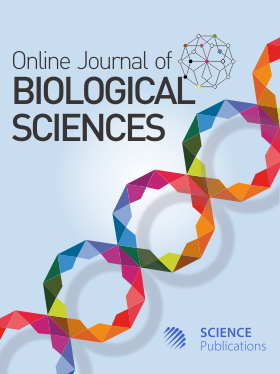Effective Strains of Beauveria Bassiana and B. Pseudobassiana used Against the Asian Locust (Locusta Migratoria L.) in Kazakhstan
- 1 Kazakh National Agrarian Research University, Kazakhstan
- 2 LLP “Kazakh Research Institute of Plant Protection and Quarantine named after Zh. Zhiembayev”, Kazakhstan
- 3 М. Auezov South Kazakhstan University, Kazakhstan
- 4 University of Friendship of Peoples Academician A. Kuatbekov, Kazakhstan
Abstract
The purpose of the study was to perform genetic identification of the strains of fungi of the Beauveria genus and evaluate the effect of abiotic factors on the growth and survival of colonies and the productivity of conidia of these fungi, as well as to determine the biological effectiveness of the semi-preparative form of the drug based on Beauveria bassiana in the field. Conventional and modern methods accepted in biology and mycology were used. Identification of strains of Beauveria fungi was carried out by determining the direct nucleotide sequence of the TEF region. Laboratory experiments were carried out to evaluate various factors on the diameter of colony growth, survival in deep and surface cultivation, the type of semi-preparative form of the drug based on B. bassiana and the time of its exposure, and the effect on the biological effects of drugs in the field. Statistical data processing was carried out in the R studio program using the P value. The productivity of conidia of entomopathogenic fungi during surface cultivation depended on the type of strain and the duration of cultivation of conidia. The diameter of the growth of Beauveria fungi colonies was influenced by the factors of the strain, the type of nutrient medium, the temperature of colony cultivation, and the number of days after the start of colony cultivation. The survival of conidia of the B. bassiana fungus on the wings of Locusta migratoria L. correlated with the indicators of cultivation temperature and germination of conidia and cultivation time. The productivity of Beauveria spp. conidia correlate with the type of strain, the type of substrate, and the time of exposure. The conidia continued to germinate on the 25th day. Fungi grew better on a substrate based on millet. In the field, the mortality rate of L. migratoria L. and the biological effectiveness of biopesticides were influenced by the factors of the strain, the form of spraying with the bio preparation, and the time elapsed after treatment with the biopesticide.
DOI: https://doi.org/10.3844/ojbsci.2022.492.501

- 2,243 Views
- 971 Downloads
- 1 Citations
Download
Keywords
- Beauveria Spp. Strain
- Abiotic Factors
- Fungi
- Insect Mortality
- Biological Effectiveness
